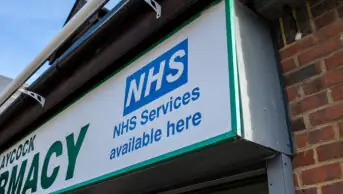Over the past 40 years, information technology has had a major impact on the working lives of millions of people. Many industries have embraced computer technology because of the benefits of automated information processing. These include enabling routine, repetitive and monotonous tasks to be conducted with consistent accuracy; standardisation and consistent use of terminology and nomenclature; and mass customisation (the capacity of information technology to provide services to a large population, yet in a way that can be customised to the individual).

Many pharmacies do not use all of the available functionality of their systems, for example, modules to handle patient-centred services such as medicines use reviews
For prescribers and pharmacists, IT can enable the storage of structured patient records, facilitate the electronic prescribing, dispensing and administration of medicines, automate the handling of medicines in the supply chain and provide tools for monitoring the efficacy and safety of medicines in use. IT can therefore improve patient safety, enable professionals to provide high quality care and help patients make the most of their medicines.
Making the most of systems
Pharmacists are already using IT systems to support their daily work and, when considering the IT requirements for emerging working practices, pharmacists should consider what functions could be provided by systems that they already use.
For example, all pharmacies use pharmacy management systems for medication records, dispensing, labelling, ordering and stock control. However, many pharmacies do not use all of the available functionality of their system, for example, modules to handle patient-centred services, such as medicines use reviews or prescription interventions.
Pharmacists should also make the most of services that are available in their locality, for example, electronic prescription service release 2.
Adoption and use of EPS release 2 in areas where it is available has the potential to make dispensing and reimbursement processes more efficient for community pharmacists and the nomination process may help pharmacists to secure prescription business.
Access to patient record systems will assist pharmacists with professional decision-making in providing patient-centred services. For example, the summary care record is now available in many areas, and has been shown to be beneficial for hospital pharmacists for medicines reconciliation. In future, it may be used by community pharmacists, for example with MURs and emergency supplies. As pharmacists deliver more patient-focused services in future, they will increasingly use national and local patient record services to do so.
The power of the internet
The internet has been widely adopted for business and social communications. In future, as internet use becomes universal, there may be an increase in the number of internet pharmacies, and use of the internet to display and disseminate information on medicines and health from pharmacies.
Currently, secure web-based platforms are available from various providers to support enhanced pharmacy services and public health initiatives. The use of these will increase and also web platforms will be used as a communication portal to make information available to pharmacists from other care settings (eg, hospital discharge information).
Electronic prescribing and discharge
Electronic prescribing (EP) systems automate prescribing, supply and administration of medicines in hospitals, where they have been shown to reduce medication errors and have a major impact on patient safety. However, the effect on error reduction is dependent on system design and a poorly implemented system can actually increase error rates.
EP systems were pioneered in the US in the early 1990s, but there are still relatively few hospitals in the UK with whole-hospital EP systems. The Technology Fund, announced by the Government in May 2013, will, hopefully, increase the adoption and use of EP in hospitals.
Timely and accurate transmission of a patient’s discharge prescription from secondary to primary care is important to ensure seamless patient care, and also to prevent errors arising from miscommunications. Recently, many hospitals have adopted electronic discharge systems (sometimes as a “quick-win” compared with a whole-hospital EP system). However, these systems may have inadequate decision support functions, and data fields that are not in a standard format. Furthermore, they route the discharge information to GPs, not to community pharmacists.
There are a number of local and national initiatives being developed to address these issues, such as the NHS Connecting for Health Electronic Discharge Implementation Toolkit with standard discharge headings, schemes such as the East Lancashire “Refer to pharmacy” system, designed to ensure that community pharmacists are in the discharge communication process and the Royal Pharmaceutical Society’s standard pharmaceutical care record programme.
Barcode medicine identification
Barcode identification of medicines has been used with EP systems and has been shown to reduce medicine administration errors, as well as improve the completeness of the medication history. However, barcode medicine identification at the point of administration is an interruptive process and, for this reason, health professionals often develop “work arounds” to circumvent barcode scanning.
The Falsified Medicines Directive (FMD), due to be implemented in 2017, calls for unique identification of medicines at the point of dispensing, in order to combat counterfeiting. Although the exact UK system to support FMD has not yet been developed, this process is likely to involve barcode scanning of medicines and will therefore have a major impact on pharmacy workflow.
Automated dispensing
Robots have been used in logistics and distribution for many years, but only recently in pharmacy. In 2001, the Audit Commission’s “Spoonful of sugar” report advocated the use of automation to transform pharmacy services and, since then, many UK hospitals installed dispensary robots. Pharmacy robots have been shown to reduce the incidence of dispensing errors, improve the speed and efficiency of the dispensing process, and optimise use of space in the pharmacy.
Robot use in community pharmacy in the UK is still relatively limited. However, robots have the potential to handle high volumes of dispensing in community pharmacies, or dispensing “hubs”, and to release pharmacists to develop and deliver patient-centred services.
As newer, smaller and more efficient machines become available, robot use in all sectors of pharmacy is likely to increase. Similarly, automated methadone dispensing machines (eg, Methameasure, Methadose) offer accuracy and efficiency in the laborious methadone dispensing process and their use is likely to increase, too, especially in pharmacies with a high volume of methadone dispensing.
The use of electronic ward cabinets is the next level of automation in hospitals. These have been shown to provide benefits such as reduced number of medication errors, reduction in number of missed doses, supply delays and stock outages, and reduction of stock-holding and wastage.
However, installation of ward cabinets constitutes a considerable expense, a major implementation project and a significant change in working practice for both pharmacy and nursing staff. For these reasons, ward cabinets have not been installed in many UK hospitals to date.
Mobile technology
The use of mobile telephones is widespread in society. Some pharmacies are using text alerts to remind patients that repeat prescriptions are ready or to offer services, but sophisticated apps have been developed for disease monitoring, for example, recording of peak flow readings in asthma, monitoring of blood glucose levels, medication adherence support and health education. These apps will have a greater impact on pharmacy practice in future.
Adherence monitoring
Various technologies are now available to support approaches to adherence monitoring. A number of vendors have developed “smart” packaging, where a microchip-containing tablet blister pack is able to monitor when doses are popped out (not necessarily taken) and prompt the patient to record side-effect monitoring information for the medicine in question. These data can then be transmitted to a mobile telephone or tablet device.
A more invasive adherence monitoring technology is the “smart” pill, for example, the Lifenote system, piloted by Lloydspharmacy. This consists of a sensor pill, ingested by the patient, which transmits data on doses taken, heart rate, body posture to a mobile telephone or tablet device, via a receiver patch on the patient’s skin. At present, this is available only as a dummy pill, but eventually it will be incorporated into medicines.
Telecare
Telecare involves the use of digital communications technology (audio and visual) to provide healthcare consultations and services to patients remotely at home. Telecare has various potential benefits: it puts patients at the centre of their care and supports personalised medicine; it improves access to healthcare by reducing the need for hospital attendance (for people with poor mobility, or those in remote areas); and it can reduce the travelling times and costs of healthcare professionals.
However, the exact benefits provided by telecare vary between different applications and care scenarios, and, at present, the literature suggests that more evidence of outcome benefits, and more cost-effectiveness data are required to justify further investment in telecare.
In pharmacy, use of remote consultations, together with EPS release 2 and an internet pharmacy supply service, could transform the way that pharmacy services are provided. However, adoption of telecare in pharmacy would be dependent on the availability of reliable communications and integration architectures, the willingness of pharmacy operators to invest in these and also a critical mass of domestic use of digital technologies in all patient demographics.
Conclusion
A range of systems and technologies is available to support the medicines supply and use processes. However, pharmacists will need to ensure that they harness technologies in a way that will support their professional aspirations and that they are not bypassed in the IT initiatives of the new NHS.
Further reading
- Goundrey-Smith SJ. IT in pharmacy: an integrated approach. London: Springer Science; 2013.
- The power of information: putting all of us in control of the health and care information we need. London: Department of Health; 2012.
This article originally appeared in the supplement: Focus — community pharmacy
The issue of Focus in which this article appeared was supported by GSK


